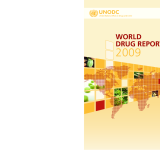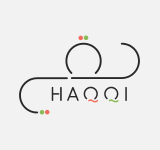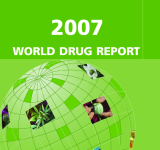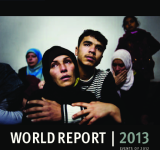Asia
In 2009;; the United Nations Member States decided to make further and decisive progress;; within a decade;; in controlling illicit drug supply and demand. Many illicit drug markets have reached global dimensions and require control strategies on a comparable scale. In that context;; there is a need to better understand these transnational markets and the manner in which they operate. This year's World Drug Report is a contribution towards that objective. It opens with an analytical discussion of three key transnational drug markets: the markets for heroin;; cocaine and amphetamine-type stimulants. The market discussion is followed by a presentation of statistical trends for all major drug categories. The latest information on drug production;; seizures and consumption is presented. Finally;; there is a discussion on the relationship between drug trafficking and instability.
The World Drug Report presents a comprehensive overview of the latest developments in drug markets. It covers production;; trafficking;; consumption and related health consequences. Chapter 1 of this year’s report examines the global situation and the latest trends in the different drug markets and the extent of illicit drug use;; as well as the related health impact. Chapter 2 addresses the phenomenon of new psychoactive substances (NPS);; which can have deadly consequences for their users but are hard to control;; with dynamic;; fastmutating producers and “product lines” which have emerged over the past decade.
An estimated 3 % of the global population;; or 185 million people consume illicit drugs annually. Among this population are people from almost every country on earth and from every walk of life. Countless more people;; around the world;; are involved in the production and trafficking of illicit drugs;; and still more are touched by the devastating social and economic costs of this trade. These people live in both developed and developing countries;; are rich and poor;; healthy and unhealthy;; citizens and refugees. Illicit drugs are a truly global phenomenon. Partially a consequence of this pervasiveness;; and partially a consequence of the illicit and hidden nature of this trade;; reliable analysis and statistics on the production;; trafficking and consumption of illicit drugs are rare. In cooperation with Member States;; the United Nations Office on Drugs and Crime (UNODC) has endeavoured to fill the gaps. In this first edition of the new two volume World Drug Report;; UNODC presents more quantitative data than ever before in an effort to increase the amount of factual evidence available in a field which is so notoriously difficult to quantify. This year;; the analysis of trends;; some going back ten years or more;; is presented in Volume 1. Detailed statistics are presented in Volume 2. Taken together these volumes will provide the most complete picture yet on today's illicit drug situation.
The negative impacts of the illicit drug trade touch every society in the world. This year's World Drug Report estimates that 200 million people;; or 5% of the global population age 15-64;; have consumed illicit drugs at least once in the last 12 months. The drug trade is pernicious and large. UNODC estimates its retail value at US$ 321bn. It impacts almost every level of human security from individual health;; to safety and social welfare. Its consequences are especially devastating for countries with limited resources available to fight against it. The World Drug Report 2005 provides one of the most comprehensive overviews of illicit drug trends at the international level. In addition;; this year it presents the work of UNODC in two new areas of research. Both aim to provide tools to enrich our understanding of an immensely complex situation: an estimate of the financial value of the world drug market;; and the preliminary steps towards the creation of an illicit drug index. The analysis of trends;; some going back 10 years or more;; is presented in Volume 1. Detailed statistics are presented in Volume 2. Taken together these volumes provide the most up to date view of today's illicit drug situation.
Some 200 million people;; or 5 percent of the global population age 15-64;; have used illicit drugs at least once in the last 12 months. Among this population are people from almost every country on earth. More people are involved in the production and trafficking of illicit drugs and still more are touched by the devastating social and economic costs of this problem. Partially a consequence of its pervasiveness and partially a consequence of the illicit and hidden nature of the problem;; reliable analysis and statistics on the production;; trafficking and use of illicit drugs are rare. The World Drug Report 2006 endeavours to fill this gap. It provides one of the most comprehensive overviews of illicit drug trends at the international level. In addition;; it presents a special thematic chapter on cannabis;; by far the most widely produced;; trafficked and used drug in the world. The analysis of trends;; some going back 10 years or more;; is presented in Volume 1. Detailed statistics are presented in Volume 2. Taken together;; these volumes provide the most up-to-date view of today's illicit drug situation.
The World Drug Report presents the most comprehensive statistical view of today's illicit drug situation. This year's edition reports signs of long-term containment of the global problem. However;; the overall trend masks contrasting regional situations;; which the report examines in detail. For instance;; while an impressive multi-year reduction in opium poppy cultivation continued in South-East Asia;; Afghanistan recorded a large increase in 2006. More interceptions of cocaine and heroin shipments across the world have played an important part in stabilizing the market. However;; as we witness successes in some areas;; challenges appear in others. Although drug abuse levels are stabilizing globally;; countries along major and new trafficking routes;; such as those now going through Africa;; may face increasing levels of drug consumption. The World Drug Report 2007 also discusses a possible method to better assess and monitor the role played by organized crime in transnational drug trafficking.
This 23rd annual World Report summarizes human rights conditions in more than 90 countries and territories worldwide in 2012. It reflects extensive investigative work that Human Rights Watch staff has undertaken during the year;; often in close partnership with domestic human rights activists.





